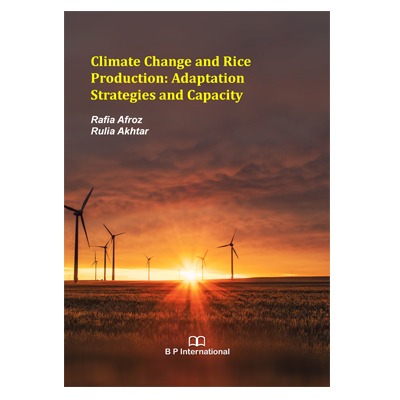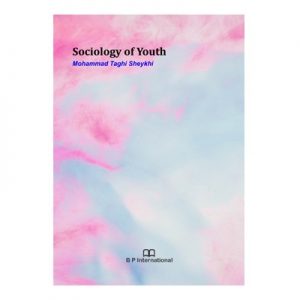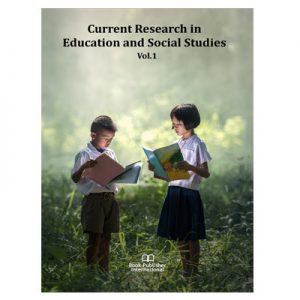Malaysia became a wealthy, urbanised, and industrialised country during the next three and a half decades as a consequence of fast economic development and structural changes. Farmers in rural Malaysia, on the other hand, continue to suffer from poverty. As a consequence, farmers account for the majority of Malaysia’s poor. The gap between those who are poor in rural regions and those who are poor in cities is increasing, requiring action. As a matter of fact, it appears that focusing on farms is essential in alleviating rural poverty. Due to their reliance on agricultural output for a living, farmers have been designated as the most susceptible population to climate change. Small- scale farms are the more vulnerable to climate change than large-scale farms. Climate change has the potential to significantly diminish agricultural output, impacting rural per capita income and poverty levels. Farmers’ perceptions of the issue, as well as their responses to it, are critical for successful climate change adaptation. Much of Malaysian climate change research focuses on the consequences of climate change, historical and future trends, with agriculture accounting for a significant percentage of the research. The importance of agriculture as a key contributor to national Gross Domestic Product (GDP) is one possible reason why climate change implications on agriculture have garnered so much attention in Malaysia. But unfortunately, they did not consider so much the adaptation barriers, strategies and capacity to climate risks among rice farmers in Malaysia, who are equally vulnerable to the impacts of climate change.
One could wonder what effect climate change is having on rice farmers’ poverty. Are farmers aware of climate change’s consequences? Are they equipped to handle the situation? What is the extent of their adaptability? What problems do they encounter in terms of adaptability, and how do they deal with them? What alternatives do they have for coping with climate change adaptation? Therefore, this study attempts to fill in the gap by examining the economic impact of climate change on farmer poverty in Kedah and the factors that influence farmers’ adaptation decisions and their willingness to pay (WTP) for crop insurance in order to adapt to climate change. Furthermore, this study attempted to investigate the difficulties that farmers face in their adaptation process, and a policy-relevant integrated environmental protection waqf model is presented to assist farmers in overcoming these obstacles. The farmers’ willingness to accept the suggested model is also evaluated in order to validate the concept. Overall, this book utilises Kedah as a case study to illustrate farmers’ perceptions of climate change, adaptation hurdles, techniques, and possible remedies, both traditional and Islamic. Paddy production by Malaysian farmers supplied 70% of the country’s consumption demands, with half of the supply coming from the state of Kedah, also known as Malaysia’s rice bowl. One of the study’s drawbacks is that it will not cover the full country of Malaysia.
There are eight chapters in this book. The introduction, significance of the study, methodology, as well as its importance and limits, are all covered in the first chapter. The second chapter’s goal is to assess the economic effects of climate change on rice farmers’ poverty. The study’s goal was achieved through the use of a logit model. The findings revealed that education had a substantial influence on poverty. In rural Malaysia, farm size, labour costs, and temperature all have a major impact on poverty levels. The third chapter looks at how farmers
perceive adaptation strategies and the challenges they face. The study’s objectives were met using the weighted average index (WAI) and the problem confrontation index (PCI). The results of the WAI analysis showed that the farmers ranked improved irrigation as the most important adaptation strategies. The PCI analysis showed that high cost of farm inputs, unpredictable weather, lack of water resources, lack of timely weather information and lack of access to credit facilities were the most serious barriers faced by the farmers.
The purpose of Chapter four is to investigate the factors which affect farmers’ choice about climate change adaptation strategies. In this study, a logit model was used to identify the characteristics that influence farmers’ choice of climate change adaptation strategies. Access to extension, income, understanding of climate change, household size, and farm size all impact whether rice farmers employ adaptation strategies.
For policymakers to determine the awareness, attitude and adaptation behaviour of the farmers, a thorough grasp of their views of present climatic variability, as well as local trends in response to climate change, is critical. Chapter five evaluated farmers’ adaptation behaviour recognising this issue. Perceived sensitivity, severity, and advantages of climate change all have a role in boosting climate change awareness and forming favourable attitudes to mitigate the negative consequences of climate change, according to this study. The study also addresses the mediating effects of climate change awareness and attitudes towards climate change between perception and adaptation behaviours.
In the study region, little is known about farmers’ adaptive capabilities (AC) to adaptation techniques for coping with climate change in rice production. The AC of rice farmers in Kedah were estimated in chapter six. This was based on the attributes of knowledge, use, accessibility, availability and consultation related to the issue of adaptation to climate change. The AC of farmers estimated were categorized into high, moderate and low adaptive capacity. The result of this study revealed that farmers are highly adaptive to the drought- tolerant rice varieties, changing planting dates, use of chemical fertilizers, early maturing rice varieties and formal irrigation system while moderately adaptive capacity in term of farming near water bodies, farming on fallowed land, crop rotation, mixed cropping and mono-cropping. Those farmers who have a low degree of adaption rely on strategies such as improved irrigation system, varied planting in rice farms and increased use of water and soil conservation techniques. Generally, farmers are moderately adaptive to CC strategies as reflected by the average AC value 0.51, but it was found that only 21.25 per cent farmers have high adaptive capacities whereas 44.25 per cent farmers have low adaptive capacities in the study area.
Chapter seven examines the factors that influence farmers’ desire to purchase crop insurance in the agricultural industry. Descriptive statistics and the logit regression model are used to analyse the data. For every RM 1000 coverage per hectare each season, respondents’ average willingness-to-pay (WTP) for monthly crop insurance premiums is MYR 48.15. The significant variables influencing willingness to pay crop insurance by the farmers are the age of household head, attending the training course, farm income, and experience and farm size.
Chapter eight’s goals are to present the Integrated Waqf Environmental Protection Model (IWEP) and examine farmers’ willingness to adopt it. The intention of the farmers to adopt the suggested approach was investigated using the theory of reasoned action (TRA) model, which included perceived obstacles and socioeconomic factors. Structural equation modelling ((SEM) was used to analyse the gathered data .The subjective norm is favourable, according to the SEM results, and has a substantial influence on low-income farmers’ intentions to adopt the IWEP model. This indicates that the decision of the low-income farmers to accept the IWEP model is significantly influenced by their family members, neighbours and friends. Furthermore, awareness and perceived barriers have a greater impact on the elderly, highly educated and wealthy farmers. According to the findings, the elderly, highly educated, and rich farmers are aware of climate change and perceive greater dangers or hurdles as a result of it. As a result, they are more inclined to plan for adaptability.





